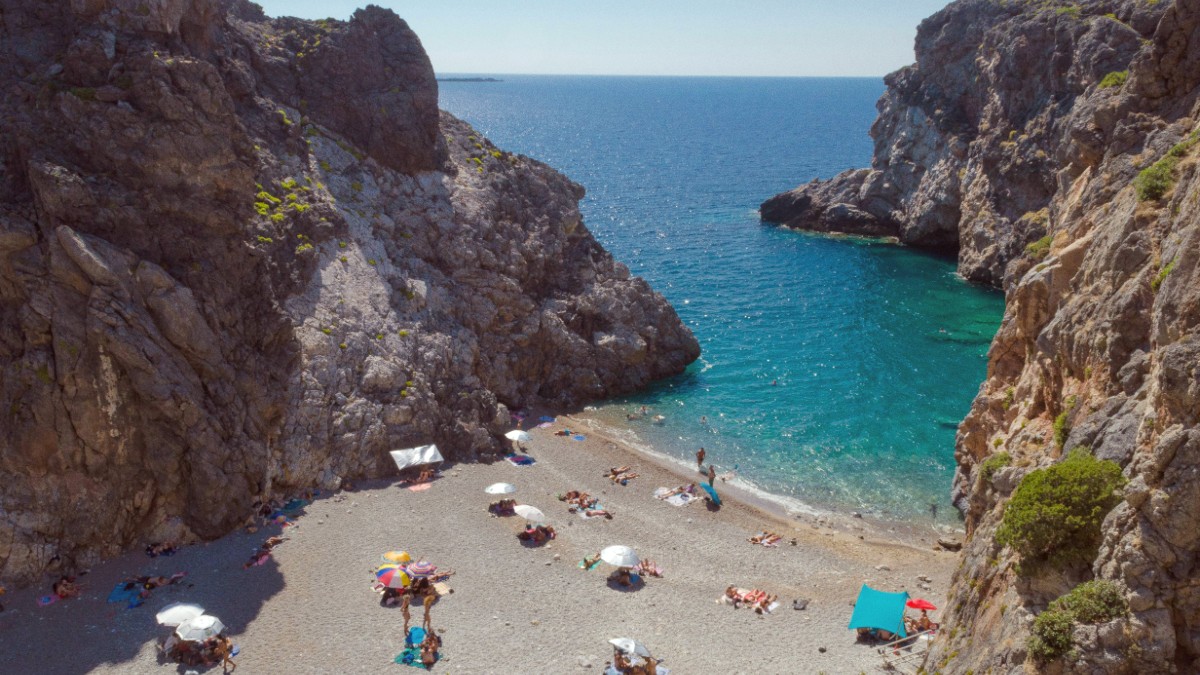
Greece
The island's history spans centuries, evident in its architecture and archaeological sites. Nature's artistry is on display with sea caves and waterfalls.
Each corner of Kythira holds discoveries, inviting a leisurely exploration.
Dress appropriately when visiting religious sites (shoulders and knees covered).
The capital, with narrow alleys, whitewashed houses, and a castle.
A picturesque fishing village with a small harbor and Venetian ruins.
The island's largest village, host to a popular Sunday market.
Known for its watermills, lush greenery, and the Neraida waterfall.
The island's main tourist hub with a bay and dining options.
Kythira's coastline holds hidden beaches, sea caves, and a striking natural bridge.
A beautiful waterfall near Mylopotamos, with natural pools.
A natural rock formation forming an impressive sea arch.
Stunning turquoise waters and the famous shipwreck of MV Nordland.
A large cave with stalactites, stalagmites, and a small chapel.
Explore accessible sea caves around Kapsali bay by boat.
A serene, sandy beach ideal for swimming and relaxation.
A refreshing natural spot in Mylopotamos, surrounded by lush greenery.
The iconic shipwreck of the Nordland, a distinctive landmark near the port.
A rare cedar forest located near the beach of Komponada, unique to the island.
Kythira is home to numerous beaches, each with its own appeal.
Kythira's topography presents many viewpoints for stunning landscapes and seascapes. Capture the island's natural beauty.
Early morning or late afternoon light often enhances photographic results.
The Venetian Castle of Chora provides a perfect spot to observe sunsets over the Aegean Sea.
At the northernmost tip of the island, this lighthouse offers views of the Peloponnese.
The charming village and its surrounding coastline feature many photogenic spots, including the 'Aphrodite's Bath'.
The twin bays of Kapsali with the Chora castle as a backdrop. A classic Kythiran image.
Plan your sightseeing days to maximize your experience on Kythira.
Museums and historical sites typically close for a midday break.
Some sites have small entrance fees. Discounts may be available for students or seniors. Pre-book tickets.
Consider engaging a local guide for insights into Kythira's history and culture.
Find maps, brochures, and local advice in Chora and Potamos.
Visit Kythira Official SiteUtilize offline maps on your device, as signal can be intermittent.
Google Maps KythiraCarry water, hats, and sunscreen, especially during summer.
Wear sturdy shoes for walking and exploring uneven terrain.
Follow guidelines at monasteries and archaeological areas.
When visiting archaeological sites and castles:
When exploring waterfalls, caves, or natural bridges:
Engaging with locals can unveil hidden stories and less-visited spots. Many islanders enjoy sharing their heritage.
A simple "Kalimera" (good morning) or "Kalinihta" (good night) opens doors to conversations.
Beyond the main sights, Kythira's cultural fabric includes traditions and local crafts.
Kythira hosts various festivals throughout the year, celebrating local produce and religious holidays.
Discover unique handmade products that reflect Kythira's artistry.
Experience the authentic pace of life by visiting Kythira's traditional villages.
Each village holds unique charm and community spirit.
Kythira's food is a part of its cultural heritage, with recipes passed down through generations.
Savor the authentic flavors of Kythira's land and sea.
The island's natural beauty holds ecological significance and cultural tales.
Kythira's landscapes blend untamed beauty with human history.
The Archaeological Museum in Chora displays findings from ancient times.
The Byzantine Museum in Kato Chora houses religious artifacts and frescoes.
Explore small galleries showing contemporary Kythiran artists.